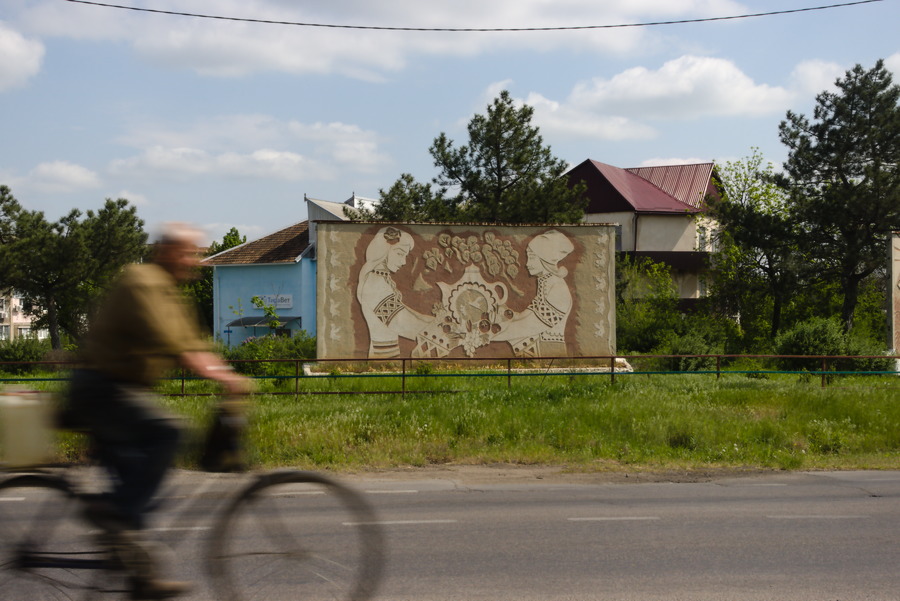
This is a short journal from my one-week trip through Pridnestrovie. I won’t dive into the history of PMR here as there’s plenty of information about it online. Journey took place at the end of April 2025.
Beggining
My trip to Pridnestrovie (or PMR) began when I got a ride in Moldova straight to Tiraspol—the capital of Pridnestrovie, a self-proclaimed country that isn’t internationally recognized. It’s located between Ukraine and Moldova, with most of its borders running along the Dniester River from the Moldovan side.
What I noticed right from the beginning, as we approached the border, were complaints about the place. The two women who gave me a ride—a mother and daughter—were heavily critical of the economic situation in their homeland. “Pridnestrovie is like this,” the older woman told me in Russian, pointing her thumb down in disapproval.
The border crossing itself was fairly smooth from the Pridnestrovian side, which is the only side as there is no border control from Moldova. Moldova doesn’t recognize Pridnestrovie and considers it part of its own territory. For EU citizens, an ID card is enough to cross the border. You’ll receive a migration card that looks like a receipt, with the entry date and duration of stay printed on it. To get that card, you need to provide an address within Pridnestrovie. I didn’t have one, but the ladies were kind enough to write down their residence address for me.
As we continued our journey, the older woman gave me a serious warning:
“If you kill someone here, I’ll be the one in trouble—they’ll come to my house.” I laughed nervously. “What are you talking about? I’m just a normal guy, not a bandit.”
We continued our ride, and I started to notice changes. All the signs suddenly switched to Cyrillic, and the cars had different license plates with Pridnestrovian flags on them.
When we got to Bendery, I saw trolleybuses on the streets. The ladies asked me if we had them in my home country. I told them, “Sure.”
“I guess they’re not as old and destroyed as ours” one of them added.
And yes, they were old indeed—probably 40 or 50 years old and still in use. The paint was peeling off, and inside I saw people with very tired faces. I did not managed to take any picture of those buses however.
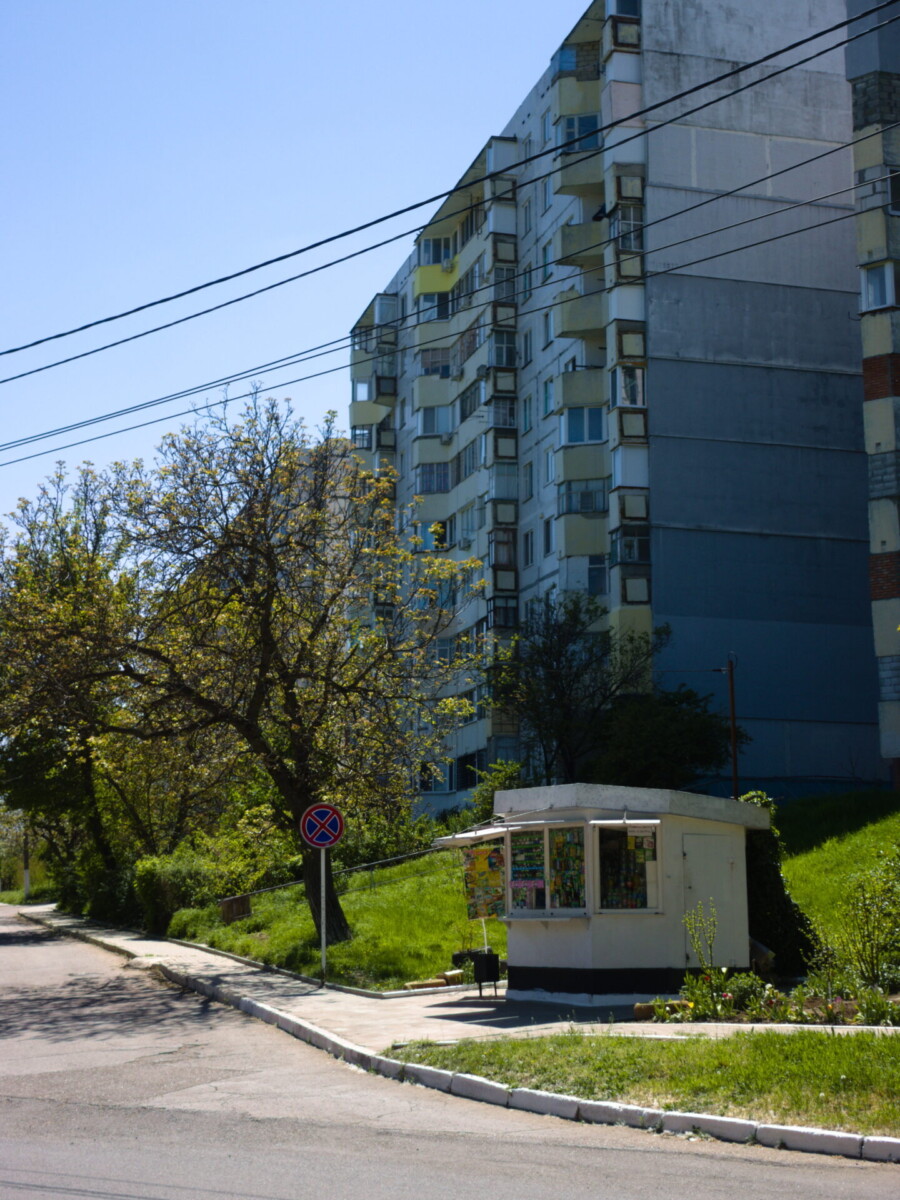
The ladies gave me a short ride around Tiraspol after I told them I wasn’t staying there at the moment but heading straight to the north of the republic. They showed me the riverside, a bridge, a couple of monuments, and the one and only Pridnestrovian university, where you can study, for example, pedagogy. As far as I know, this university isn’t recognized anywhere except in Russia.
Eventually, they dropped me off in the suburbs of Tiraspol, at the beginning of the only main road that connects the city to the very north of the country—sort of a local highway. Around me were only industrial buildings, all in a state of permanent decay.
Beyond Tiraspol
Standing on the side of that road, I got a glimpse of what awaited me—and it turned out to be one of the best places I’ve ever hitchhiked in.
After around five minutes of waiting, I got a ride for the next 15 kilometers. But not in a regular car—nope, it was a Tesla Model S. Not a new one, but still. That’s something that doesn’t happen very often in Western Europe, but it’s happened to me a few times in Moldova, where hitchhiking works surprisingly well.
After that ride, I got picked up again for about 50 kilometers. The woman who gave me a lift ran a restaurant and a few shops in the town of Grigoriopol. She told me she had lived in Istanbul for about eight years and warned me—quite seriously—not to marry a Muslim woman, saying it would only bring problems into my life since I come from a “Christian culture,” as she put it.
Despite the odd advice, we had a really nice conversation, and I started to realize that people here are genuinely kind-hearted. She dropped me off in a great spot, and after a short wait under the full sun, I got a ride all the way to Rybnitsa! I can say I hitchhiked almost the entire country vertically in just one day. Though to be fair, the distance isn’t that huge.
The car was pretty full, so I didn’t have much space to move, but the people inside were quite curious about me—what I was doing there, and why. I spent most of the ride staring out of the window, taking in beautiful views of the Dniester River.
The landscape in Pridnestrovie—and in Moldova in general—is actually really interesting. When you’re driving through, you mostly see wide-open fields and gentle hills. It gives (at least to me) some ancient feeling. The soil here is dark, rich, and fertile, and people in this region are genuinely proud of that.
In Moldova, I had a few conversations with drivers about that. One person even told me, “In France and in Germany—their land is like shit. They can be jealous of our Moldovan soil.”
Further north
As we were approaching Rybnitsa, again I had a chance to see how kind people are in this part of the world. They not only helped me to sort out problem with my migration car (which was valid only for one day), but they have also helped me to find some good spot for camping by the river. And for that they drove me 15km outside the town… local hospitality.
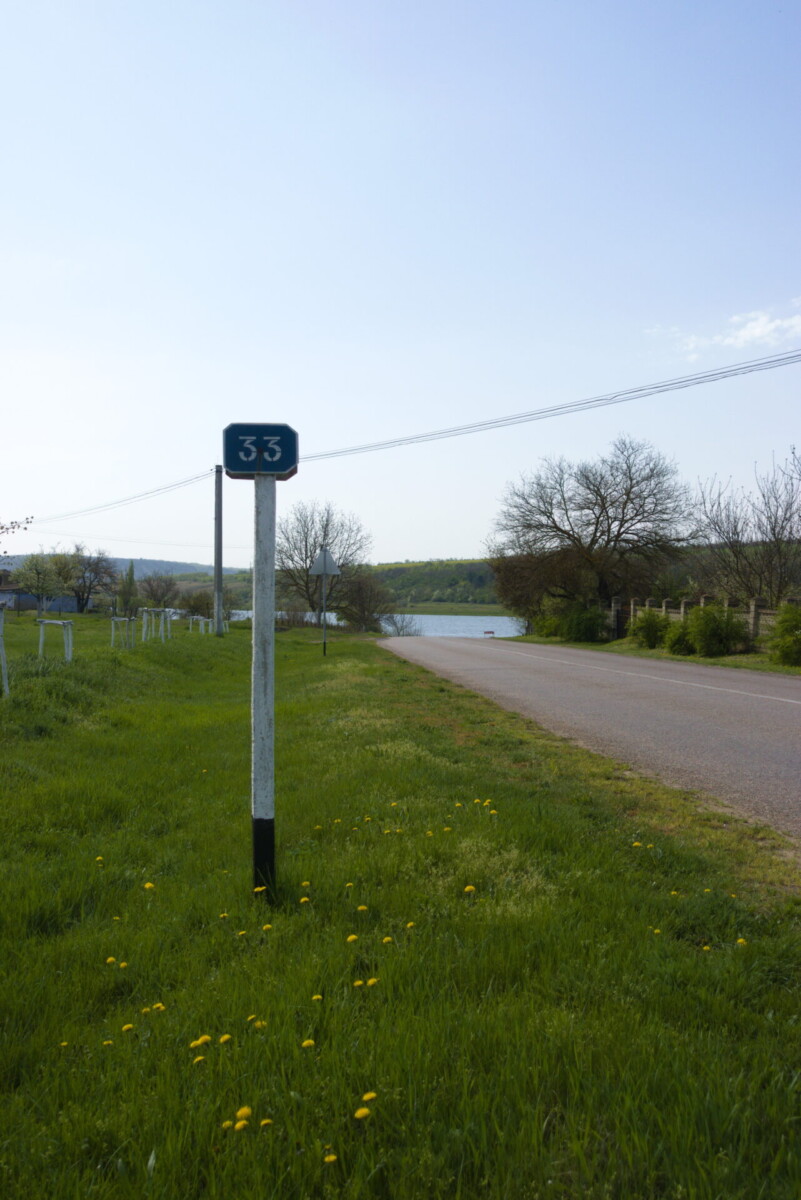
In the morning, I started heading to my main destination within Pridnestrovie: the village of Rascov. After some time standing by the road, I got a ride straight there. In the car, beside the driver, was a woman who had some Polish roots and had been to Poland a couple of times—both for work and for travel. Rascov, and especially its nearby village Sloboda-Rascov, has a small Polish minority. In Rascov, there is also a historic Polish church from the 17th century and a cemetery. Up until the 18th century, Rascov was within Polish borders.
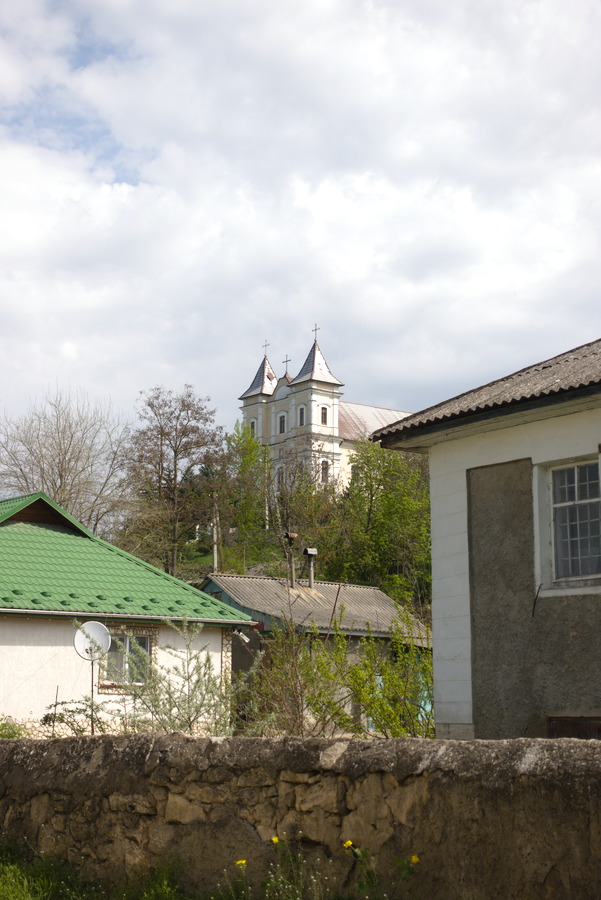
In Rascov, there is also a synagogue, a Jewish cemetery, and the ruins of a church that are currently being renovated as of 2025. There is a Lenin monument, of course—just like in most places in Pridnestrovie. The village itself is extremely peaceful and quiet. There’s not much going on. Very few cars pass by on the main street, and locals don’t really care or even notice that you’re walking around with a camera and a big backpack. Being there feels like stepping into a zone where time is standing still.
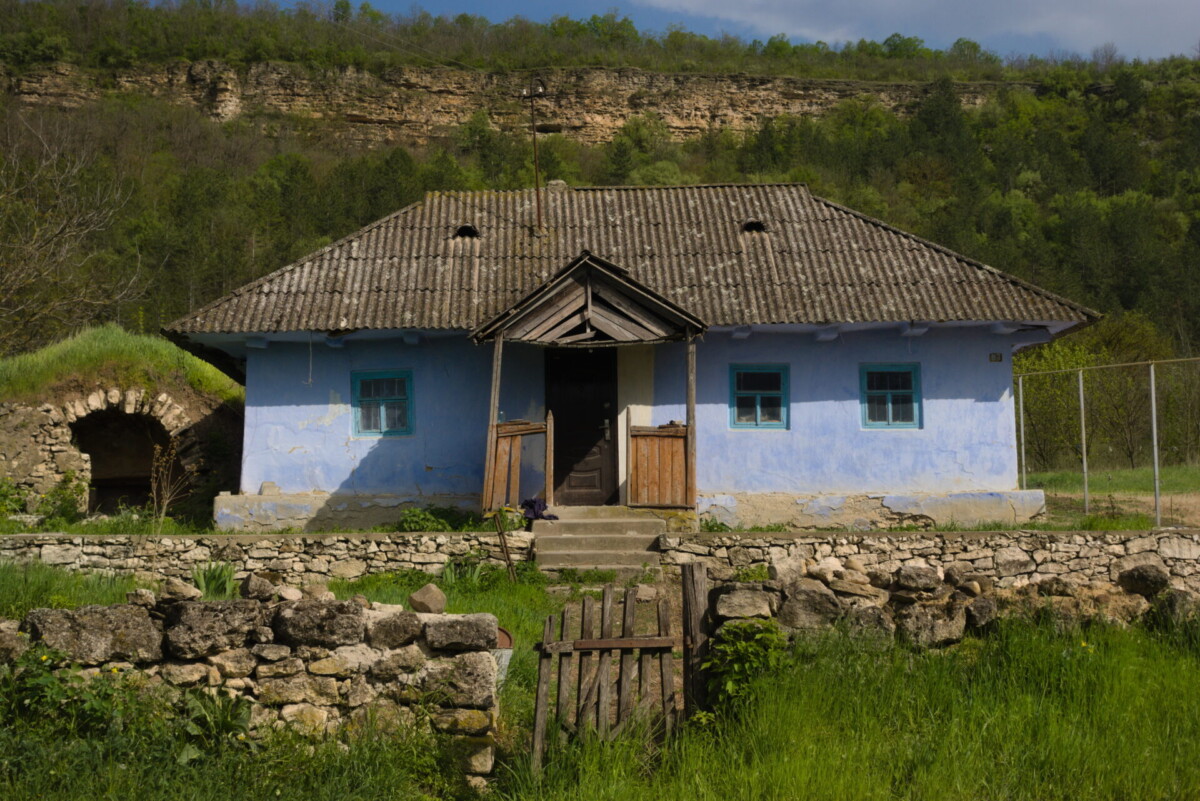
One thumb, one ride
After spending some time in Rascov, I planned to hitchhike all the way back to Tiraspol. I figured most drivers would give me lifts between nearby towns along the way: Rybnitsa → Dubossary → Grigoriopol → Tiraspol.
After waking up and setting up my spot at the local bus stop, I raised my thumb. Just a couple of cars later, I got a ride—really fast.
“Rybnitsa?” I asked.
“Yes, come in.”
The car was already full—two other women were sitting in the back—but the atmosphere inside was warm and pleasant. The driver was about my age, and we quickly found common ground. I started asking him a lot of questions about everyday life in Pridnestrovie.
To my surprise, it turned out he was going all the way to Tiraspol. I couldn’t have been happier at that moment.
As we approached Rybnitsa, we passed a military base—Pridnestrovian, of course, since they have their own local army. My driver explained that military service is compulsory for men and lasts about one year.
When I asked for his opinion on it, he laughed nervously and paused for a moment before replying.
“In Pridnestrovie, there are still a lot of people with a Soviet mindset,” he told me. “You can buy your way out of service if you have money,” he added. “Or, you can do a longer term, but in a lighter role, like working in an office—that’s what I did.”
After I told him how things work in the rest of Europe, he nodded and said,
“Only the poor ones go to serve. If you don’t want to, and you have some money, you can get out of it. Or you can just escape to the European Union, find a job, and earn a decent salary. But the ones who stay… they serve first, and then they earn next to nothing afterward.”
Sheriff – boss of it all
We stopped for a coffee by the side of the road. Next to the coffee place was a gas station with a massive line of cars waiting to refuel. The only option? Gas. I was told that gas is the main fuel choice for most people here, simply because it’s the cheapest.
“You see this gas station? It’s owned by Sheriff,” my driver said. There was no sign to confirm that.
“How can that be? There’s no Sheriff logo anywhere,” I asked.
“All the gas stations in this country are owned by Sheriff. They have a monopoly on fuel—and many, many other things.”
As we got back into the car, I started thinking more about it. They explained that most businesses here, in one way or another, are tied to Sheriff. Gas stations and branded supermarkets are the most obvious examples—there are no competing chains, because competition doesn’t really exist. Sheriff owns it all. What’s more, if you want to open even a small shop, you’re required to buy your stock directly from Sheriff, because they also control imports into Pridnestrovie. Fuel, food, electronics, cars—you name it. “This is mafia,” I said bluntly. “In Europe, they’d shut it down eventually—this kind of setup would be totally illegal.”
“You see,” my driver replied with a smile, “and here, it’s just normal…”
I followed up with another question.
“And media? What about television and radio? Do you have your own here?”
“Yes. But that’s also Sheriff,” he said.
The rest of the car burst into laughter.
At this point, I wouldn’t be surprised if Sheriff also owned the weather…
“The country of Sheriff,” as the locals say.
Tiraspol – PMR’s most touristic site
Most people who visit Pridnestrovie stick to just one place — Tiraspol, the capital city of this self-proclaimed republic. They usually enter from Moldova by bus (marshrutka) and spend a day or two poking around. Tourist accommodation in the capital is pretty limited, so if you’re traveling on a budget like me, you’ll probably end up in one of the few available hostels.
One of those options includes a hostel with a Lenin torso greeting you at the entrance — a nice welcome, straight from the past. That’s also where I met actual tourists for the first and last time during my stay in PMR.
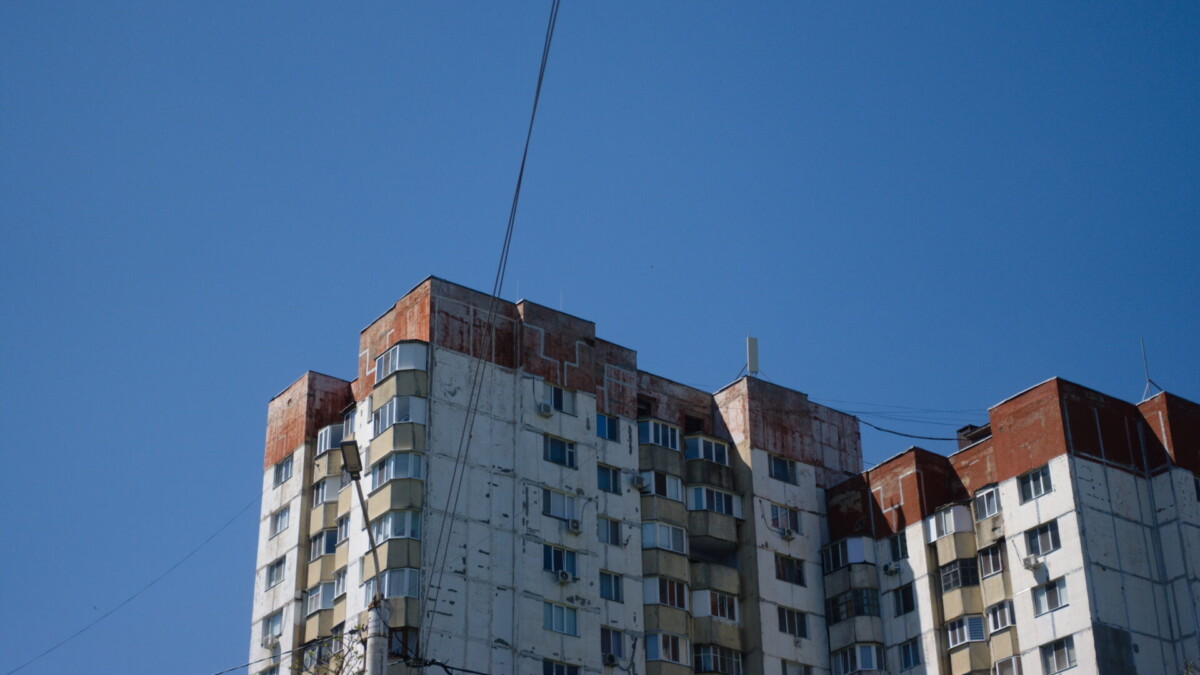
After some rest in the city, I decided to head out to the country’s one and only resort — at least the only one I know of — called “Liman,” near the town of Dnestrovsc.
I left the hostel on foot and headed toward the main road leading south. I wanted to take the shortest possible route, so I cut through a quiet neighborhood filled with fancy villas. It was all pretty peaceful… until I suddenly came across a military building surrounded by barbed wire. One sign on the front read: “SPECNAZ.”
I made a quick U-turn and found myself on the actual road to Dnestrovsc. This time, though, my luck ended— I had to wait nearly 50 minutes for a car to stop.
In the middle of that waiting process, an old “dedushka” passed by in his car. When he saw me, he made the sign of the cross — probably thinking I was some sort of cursed spirit with a big backpack on the ground.
People stared as I stood there laughing like a lunatic. Understandable.
Eventually, I got a ride—about 10 kilometers or so. From there, another lift came quickly, this time for around 20 more. The driver was a man in his early 60s, maybe mid-60s. Big guy, but soft-spoken and kind. He mentioned that it was some sort of Orthodox Christian holiday, so I shouldn’t expect too many people at the resort. Sounded just about right.
Liman resort
When I finally arrived in Dnestrovsc, I headed straight to the resort and its beach. Aside from Russian, there are also signs in English in the most important spots in Pridnestrovie, giving you directions. The town of Dnestrovsc (with a population of around 10,000) is just like all the other towns in PMR—Soviet, and in a state of permanent decay. Most people work at the neighboring power plant, as there are no other job opportunities.
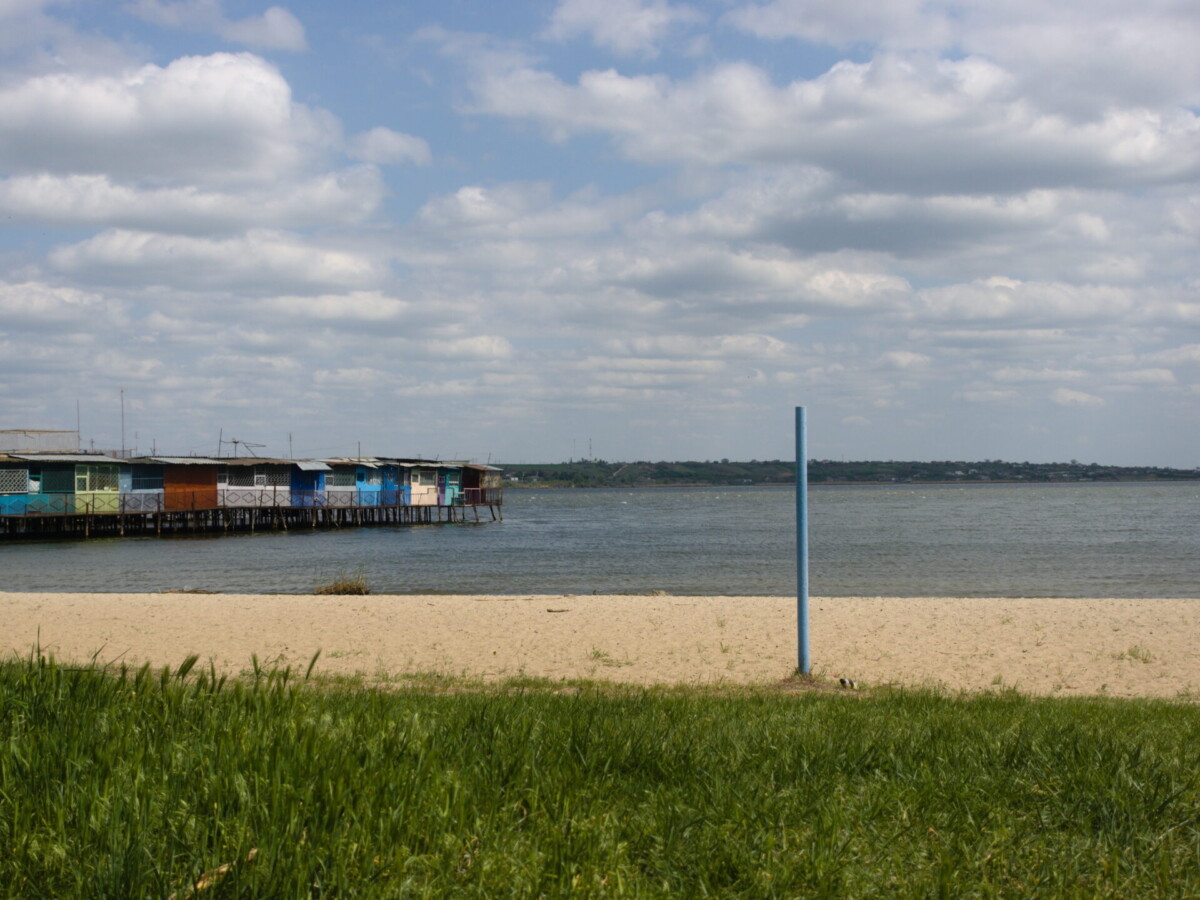
I’d say the resort was actually worth visiting. I saw maybe ten people total wandering the beach that whole afternoon, and absolutely no one the next morning. So it was really relaxing being there.
What really stood out was this strange housing complex built on the water—it gave off a kind of Amazon River/Brazilian vibe. It all looked quite surreal, but I enjoyed every single minute I spent there. So yeah, you don’t need to go that far for an exotic experience (if you’re from Europe, of course).
Last moments in Pridnestrovie
When I woke up the next morning, I had to walk to the outskirts of Dnestrovsc, which took me a while since I started from the beach. When I finally got there, it took me literally one minute to get a ride straight to Tiraspol. My driver turned out to be a trucker, and we had a nice time chatting. He was heading to work in Moldova. As he told me: “Pridnestrovie is all nice and beautiful, but if there were any jobs here, then it would be perfect.”
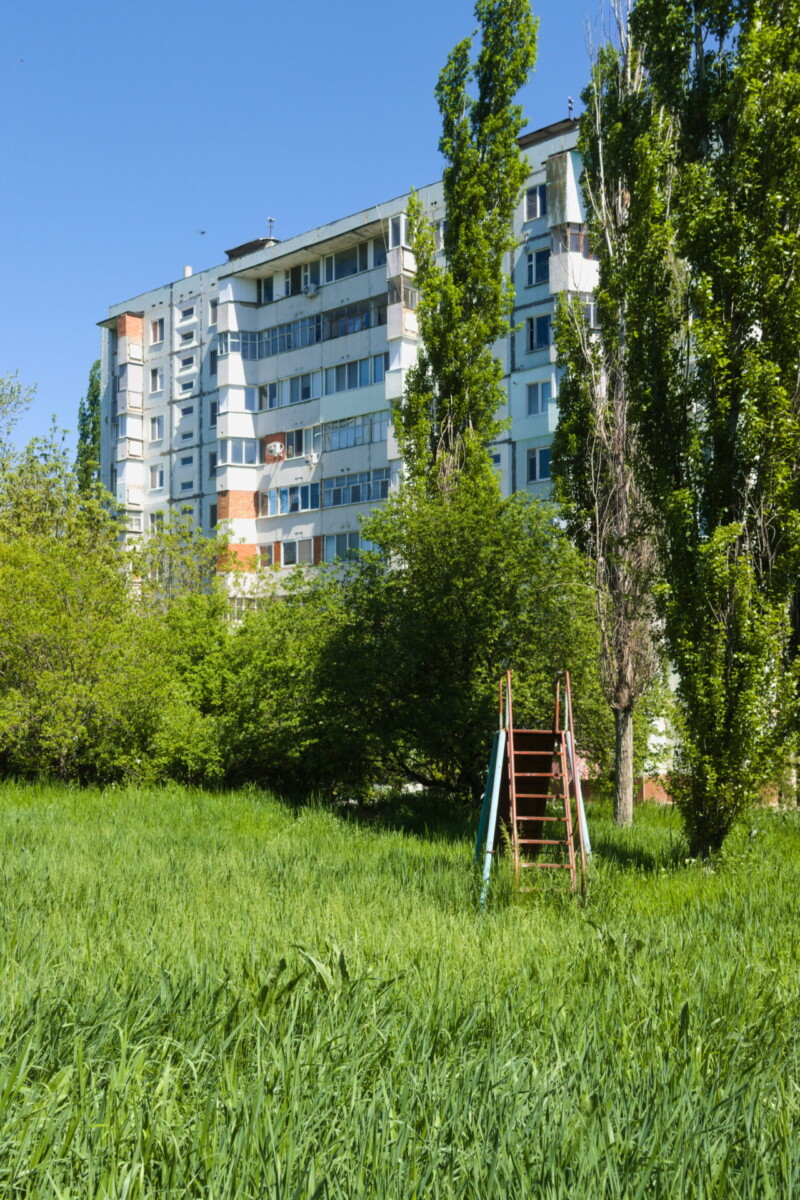
When I arrived in Tiraspol, I decided to take a marshrutka to Bendery. I spent my last couple of hours (and local rubels) there, mostly walking toward the border with Moldova. After about 15 minutes, I got a ride in the direction of Chisinau and left PMR without any problems at the border.